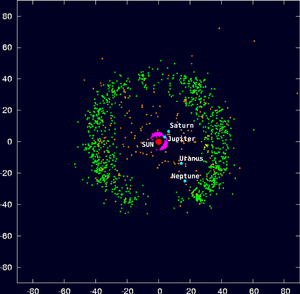To be precise, what we do is to work on alternative methods for finding scattering amplitudes in Quantum Field Theories, since the Feynman diagram techniques currently used become wildly inefficient for interactions involving large numbers of particles. To crank the jargon up a notch, we specifically use Unitarity-based methods which allow complicated loop integrals to be reduced to products of tree amplitudes multiplied by a known integral basis.
The other interesting strand of our research revolves around the study of N=8 Supersymmetric Quantum Gravity. As you may know, most quantum theories of gravity suffer problems with infinite terms appearing in calculations which are impossible to cancel. One possible way around this is to treat particles as extended objects, known as String Theory; however, this approach is fraught with its own set of problems (as well as being an utter nightmare to calculate anything in). The hope of N=8 SUGRA is that due to large cancellations in such a heavily supersymmetric theory the infinite terms will not appear, allowing for the possibility of a Quantum theory of gravity without introducing all the problems of String Theory.
So far, no divergent terms have been found in any of the N=8 amplitudes calculated. In fact, the cancellation between terms appears to be a good deal stronger than expected from the degree of Supersymmetry. This is interesting because this additional cancellation is quite distinct from the Supersymmetric contribution, and the mechanism behind it is AFAIK pretty much a mystery. Obviously, as more N=8 amplitudes are explicitly calculated, the picture will become clearer, which is where we come in with our unitarity methods.
The problem, of course, is that even if N=8 SUGRA turns out to be finite in four dimensions, nature is simply not N=8 supersymmetric. Therefore, the best we can ever hope for with N=8 is that it could act as a proof-of-concept that a sensible quantum field theory of gravity can exist (albeit not in this universe), and also hopefully as a context in which to study this mysterious new cancellation. The longer term picture depends largely on whether extensions of the theory can be found which look anything like the real universe; my supervisor once described it something along these lines:
The question is whether N=8 SUGRA will turn out to be Rockall, an isolated, barren patch of rationality in a vast sea of divergence; or whether it will be Tahiti, a single island in a vast chain of rich and diverse islands (not to mention a more appealing holiday destination than Rockall).
Of course, if you managed to follow any of what I just wrote, you're doing better than I am!





 Reply With Quote
Reply With Quote





Bookmarks